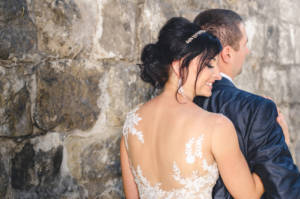
When couples plan their weddings, they must decide what traditions to include. How do Canadian weddings stack up in the 21st century?
When couples plan their weddings, they must often decide what traditions to include. These celebrations incorporate basic ceremonial elements such as exchanging vows, but many also feature customs that add layers of meaning or are passed down through families or cultures. Meanwhile, some trends become new traditions while old customs slowly fall out of favor. How do Canadian weddings stack up in the 21st century? You may be surprised once you find out.
The Role of Gender in Western Weddings
It’s no secret that many wedding customs were influenced by older social norms. As cold as this sounds, marriages were less about love and more about finances, inheritances, and sometimes political concerns. Unions were arranged in many parts of the world, with women frequently losing any legal rights they had once the ceremonies took place. The Encyclopedia Britannica explains the concept of “coverture,” in which married couples were considered single legal entities, with husbands wielding the most power and decision-making responsibilities. The idea was introduced into English law after the Norman Conquest beginning in 1066. The Canadian Encyclopedia mentions that British cultural influences on marriage and property statutes codified coverture into Canadian law in many areas.
Some wedding traditions are leftover legacies from these societal realities. For instance, you may remember that the bride’s family used to pay for the wedding. Vogue’s Priya Rao reveals that this stems from old dowry customs in which the bride’s family provided physical wealth before a marriage could take place. The Spruce’s Nina Callaway adds that the practice of fathers giving away their daughters during wedding ceremonies is also tied to dowries. This act was a sign that the father was pleased with the marriage negotiations and gave his blessing.
As Societies Change, So Do Weddings
Money Versed writer Liz Collins offers a basic breakdown on wedding traditions that are slowly being abandoned. Unsurprisingly, she listed customs that were once commonplace even in the 20th century:
- The bride’s family paying for the wedding
- Grooms not seeing their brides before the ceremony
- Gendered wedding showers
- Bouquet and garter tosses
Wedding Wire’s Alice Prendergast discusses more ways in which Canadian nuptials have changed. For instance, more couples are living together before marriage and fewer choose religious ceremonies. At the same time, a few recent trends are slowly becoming traditions. For instance, the Emily Post Institute details that high-tech weddings are the norm. That’s not a surprise to anyone getting hitched in 2019 or 2020, but what’s interesting is how this resulted from the development of some key innovations over the last few decades. Wedding websites began appearing in the late 1990s, but Pinterest and Instagram were both launched in 2010. Technological developments in photography, music playback, and even e-commerce have roots back in the 1990s or earlier.
Not All Traditions Have Disappeared
While many customs change, others remain the same. In her Wedding Wire piece, Prendergast discloses a few traditional practices that are solidly here to stay. The white wedding dress continues to be a staple, although it’s being reinvented with new details and silhouettes. The first dance is a timeless classic, along with asking for parents’ blessings and popping the question. You’ll also find alcohol at nearly every reception, with everything from signature cocktails to Canadian craft beers. Honeymoons remain popular, although some busy or cash-strapped pairs opt for mini-moons or staycations.
Customized Nuptials Are the Norm
Canadian weddings can be traditional, modern, or somewhere in between. While some old practices remain, couples craft their nuptials to fit their values, purposes, and lifestyles. No matter what customs each chooses to incorporate, these celebrations are ultimately both community events and personalized reflections of both spouses’ creativity, philosophy, and outlook.


